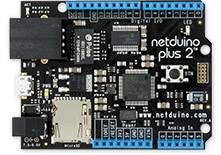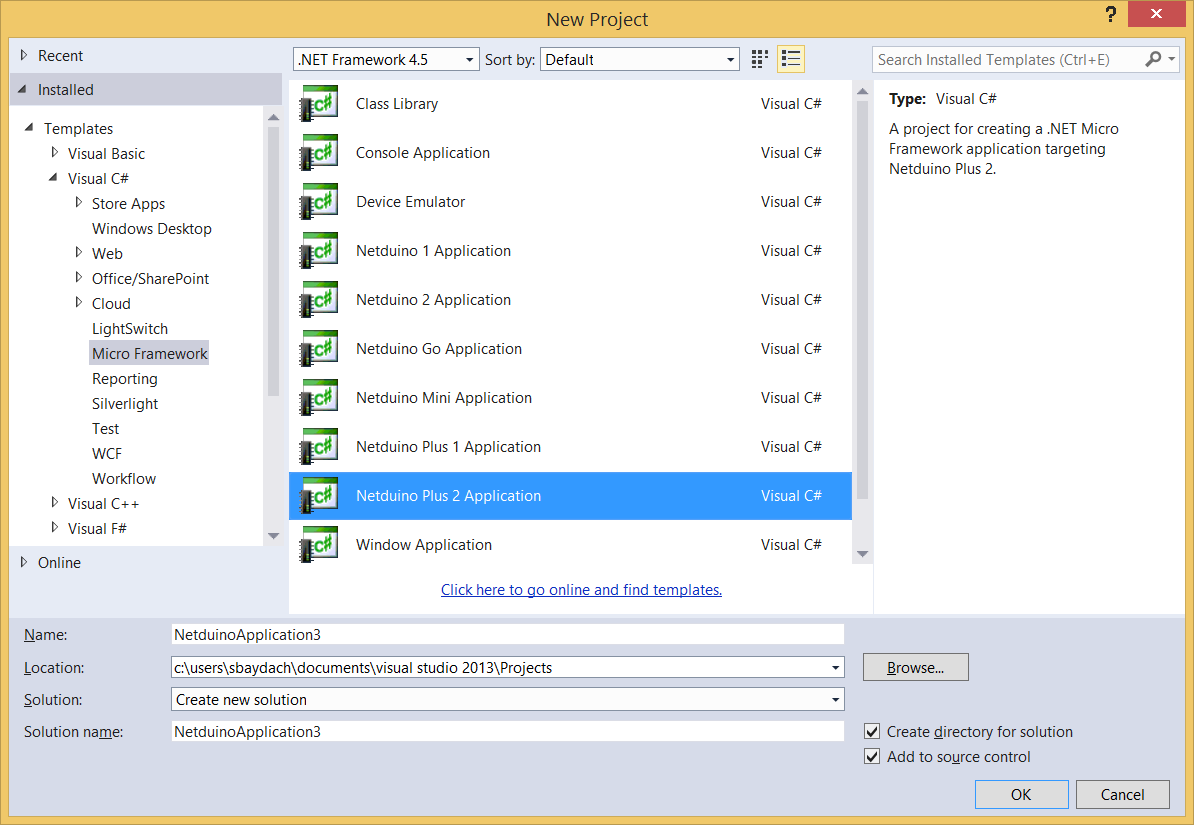Internet of Things: What about C# there?
In my post about Galileo we used C++ language in order to build some code. But what about C# and is there a way to use management language in micro devices based on different types of microcontrollers? So, this post I decided to devote to C# language.
First of all you need to understand that there is no way to use C# for Arduino boards. Of course, Arduino is very popular today but there are many different solutions in the market as well. Some of these solutions are Netduino, Raspberry PI and Galileo. Today, you can find much more different boards but these microcontrollers have better support, community and popularity. So, let’s discuss all these boards and try to understand if there is a place for C# and .NET Framework.
I am going to start with Netduino boards. You can find many different models using the following link. I would recommend Netduino Plus 2, which is the most advanced board there but it’s not important right now because all these boards run .NET Micro Framework and allow to use C# there.
.NET Micro Framework is an open source platform, which is developed for low memory devices with limited amount of resources. In fact, .NET Micro Framework could be run on devices with 64 kilobytes memory that is very important for cheap and really small devices. .NET Micro Framework has a very interesting story. Probably, it was announced too early, about 9 years ago and since that time, .NET Micro Framework supported many different microcontrollers. Today, the most popular microcontrollers are Netduino 2 and Netduino Plus 2, which are Arduino compatible. It’s very important right now because it’s easy to find many different stuff for Arduino. At the same time there are special controllers for people, who don’t have enough knowledge in electronics – Netduino Go and Gadgeteer. These two boards allow to use plug and play modules to create your own prototype fast.
In my case I decided to buy Netduino Plus 2 board and make some small projects there. And of course, if you have a board you will need to install some stuff to your computer like: .NET Micro Framework SDK, Tools for Visual Studio and board specific SDK. In case of Netduino Plus 2, I would recommend the following steps there:
- Update Netduino firmware – when I bought the board I found that it has version of .NET MF less than 4.3. But if you have older version of firmware on your board you will not be able to use the latest version of SDKs. How to update firmware you can find in Arduino forum.
- Install .NET Micro Framework SDKs and tools for Visual Studio – you can find the package using the following link;
- Install Netduino SDK – you can download it there;
In any case, before download something, check the latest versions of SDKs and firmware.
Once you install all needed software, you can use USB -> micro USB cable in order to connect it to PC. You can use this cable in order to provide power to Netduino board. Using Visual Studio you can create an application based on special templates for Netduino boards and you can start to use C# and many classes from .NET Micro Framework and Arduino there. Visual Studio supports not just deployment of applications to Netduino but debugging and Intellisense system as well. So, you developer experience should look like common Windows platform experience. It’s really cool.
The second board, which allows to use C# there is Raspberry PI board. This board is not compatible with Arduino but it’s very popular because there is not just CPU but GPU as well. The board contains HDMI output and you can connect it to TV sets, projectors etc. And you still may use many sensors from Arduino world because Raspberry supports the same voltage. Frankly speaking, Raspberry doesn’t support Visual Studio or any special tools for Windows developers but Raspberry is designed for full version of Linux operation system. You can find many different Linux edition for Raspberry but in any case you need to work with Linux. But as you know, there is an open source version of .NET Framework – Mono. So, you still can use C# and .NET framework features there.
In my research I decided to use Raspbian image based on Debian Wheezy. Somebody told me that it’s very popular and it was the first in the list of images. Of course, for Windows developers it’s not easy to understand, how to use this image but I just connected my board to TV Set, using HDMI cable and plugin keyboard and mouse there. Thanks to Edimax WiFi adapter and WiFi Config tool in the image, I easily setup Internet connection there and got IP address. Once you get Internet connection, you need to run one more command, using LXTerminal:
sudo apt-get install xrdp
This command will activate remote desktop on your board.
It’s time to disconnect your board from TV, keyboard and mouse because you may use Remote desktop right now.
In the next step, you need to run to more commands to install Mono runtime:
$ sudo apt-get update
$ sudo apt-get install mono-runtime
Thanks to Mono runtime you are ready to launch you C# application but you still don’t have tools. So, finally, in order to install Mono Develop, you can use the following command:
sudo apt-get install monodevelop
Now, you ready to run Mono Develop and launch your applications.
Frankly speaking, I am not sure if you will get much happiness while developing something on Raspberry directly. It’s not a very productive environment and it’s better to use your PC to create code and just use Raspberry to compile and launch it. While it’s interesting to create Windows Form applications on Raspberry usually you are interested in PINs there. In order to use pins from C# and make real micro solutions you will need to download RaspberryPI.NET library, which you can find using the link.
And a few words about Galileo. Officially Microsoft doesn’t support .NET Framework on Galileo boards. According to official FAQ there is a chance to see Windows Runtime or something like this soon:
Q: Will you support C#/WinRT/.NET/Node/JS… ?
A: For this first preview release, we’re focusing on C++ and Arduino compatibility. In future iterations, our intent is to support the Universal App model announced at Build.
But I found that many people already tried to make some research around Mono and Galileo board as well. For example, you can check this post in order to find some instructions about it.


